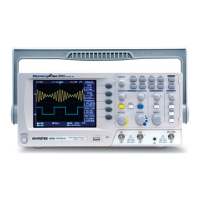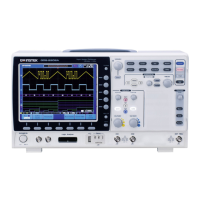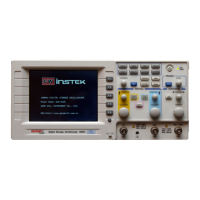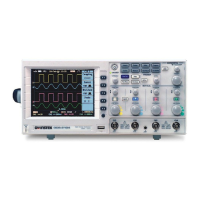CONFIGURATION
63
Real time vs Equivalent time sampling mode
Background
The oscilloscope automatically switches between
two sampling modes, Real-time and Equivalent-
time, according to the number of active channels
and sampling rate.
Real-time
sampling
Once sampled data is used to reconstruct a single
waveform. Short-time events might get lost if the
sampling rate gets too high. This mode is used
when the sampling rate is relatively low (1GSa/s
or lower).
Equivalent-time
sampling
Multiple numbers of sampled data are
accumulated to reconstruct a single waveform.
ETS restores more waveform detail but takes
longer to update the waveform. This mode is used
when the sampling rate becomes higher than
1GSa/s. The maximum equivalent-time sampling
rate is 25GSa/s.
GDS-1000A Series User Manual
64
Display
The Display section describes how to configure the display settings:
drawing type, waveform accumulation, contrast adjustment, and
grid settings.
Selecting vector or dot drawing
Procedure
1. Press the Display key.
Display
Vectors
The sampled dots are connected by
lines.
Accumulating the waveform
Background
Accumulation preserves the old waveform
drawings and overwrites new waveforms on top
of it. It is useful for observing waveform variation.
Procedure
3. Press the Display key.
Display
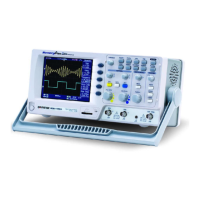
